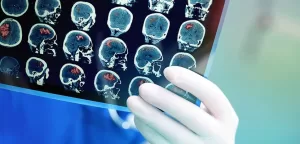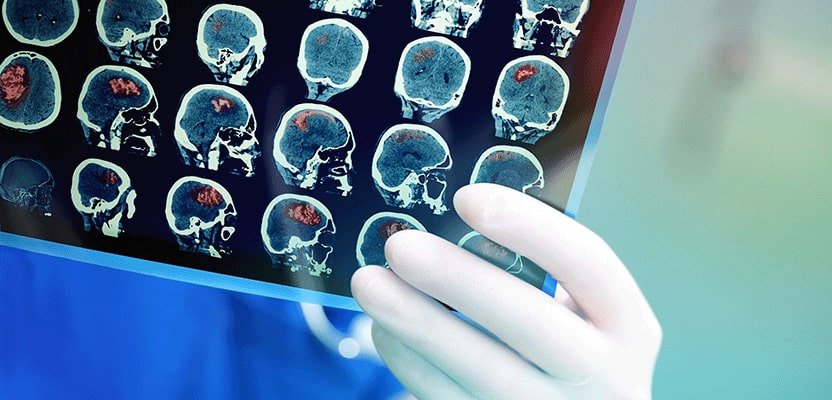+90 533 813 89 77
info@bookingforhealth.com

Brain Tumors

What are the Functions of the Brain in the Human Body?
The brain is the organ located in the skull that is responsible for controlling and coordinating all bodily functions and activities. It is the central control center for the body, receiving and interpreting information from the senses and issuing commands to the rest of the body.
The functions of the brain can be broadly categorized into three main areas:
- Control and Coordination of Movement and Bodily Functions: The brain receives and interprets information from the senses, and uses this information to coordinate movement, balance, and coordination.
- Processing of Information: The brain receives and interprets information from the senses, and processes this information to make sense of the world around us. This includes interpreting visual and auditory information, recognizing faces and objects, and understanding language.
- Regulation of Behavior and Emotions: The brain is responsible for regulating behavior and emotions, and for controlling our responses to different situations. This includes regulating our emotional responses and controlling our impulses and desires.
Overall, the brain is the most complex organ in the body and is responsible for a wide range of functions that are essential for our survival and well-being.
What are the Causes of Brain Tumour?
Various factors can increase the risk of developing a brain tumor.
- Genetic Factors: Some genetic conditions, such as neurofibromatosis and von Hippel-Lindau disease, increase the risk of brain tumors.
- Environmental Exposure: Exposure to certain chemicals or toxins, such as pesticides and solvents, may increase the risk of brain tumors.
- Radiation Exposure: Exposure to ionizing radiation, such as that used in radiation therapy for cancer, may increase the risk of brain tumors.
- Age: The risk of brain tumors increases with age, with most brain tumors occurring in people over the age of 60.
- Gender: Brain tumors are slightly more common in males than females.
- Family History: People with a family history of brain tumors may have a higher risk of developing a brain tumor themselves.

How is Brain Tumour Treated?
The treatment of a brain tumor depends on the type, size, location, and grade of the tumor, as well as the patient’s general health and medical history. There are certain types of treatment for brain tumors.
Surgery is the most common treatment for brain tumors. Surgery aims to remove as much of the tumor as possible without damaging the surrounding healthy brain tissue. Radiation therapy uses high-energy beams to kill cancer cells. It can be used before or after surgery to shrink the tumor or kill any remaining cancer cells. Chemotherapy uses medicaments to kill cancer cells. It can be taken by mouth or injected into a vein and may be used before or after surgery to shrink the tumor or kill any remaining cancer cells.
Targeted therapy uses medicaments that target specific molecules found in cancer cells that help them grow. This type of therapy is often used in combination with other treatments.
It is important to note that the treatment plan will be tailored to each patient and may include a combination of these treatments. It should also be noted that for some patients the aim of treatment may be to control symptoms rather than cure the tumor.
How Does the Recovery Process of Brain Tumour Treatment Progress?
The recovery process after brain tumor treatment can vary depending on the type of treatment received, the location and size of the tumor, and the patient’s overall health. In general, recovery from brain tumor treatment can be divided into several stages:
- Acute Phase: This is the immediate period following treatment, during which the patient may experience side effects from the treatment, such as fatigue, nausea, and headaches. Pain management and control of other symptoms may be necessary.
- Subacute Phase: This phase typically begins a few weeks to a few months after treatment and can last for several months. During this phase, patients may experience ongoing fatigue, headaches, and other side effects, as well as cognitive and emotional changes. Physical and occupational therapy may be necessary to help patients regain strength and function.
- Rehabilitation Phase: This phase begins after the subacute phase and can last for several months to a year or more. Patients may continue to experience side effects, but these will likely be less severe. Rehabilitation may include physical and occupational therapy, speech therapy, and cognitive therapy to help patients regain as much function as possible.
- Long-term Phase: This is the period after the patient has completed rehabilitation and has reached their maximum level of recovery. Patients may continue to experience some side effects or changes in cognitive or emotional function, but these will be less severe than during the acute or subacute phases.
It’s important to note that recovery can be different for every person and can take time, it’s also important to have a good follow-up with the healthcare team.



